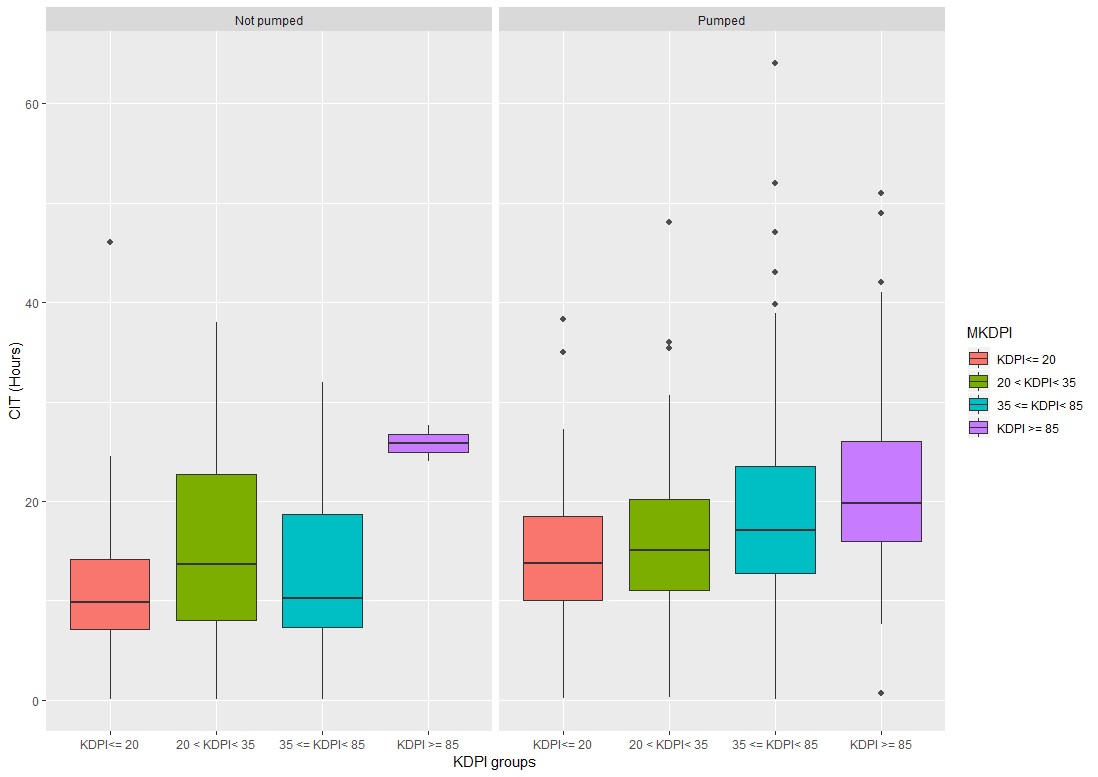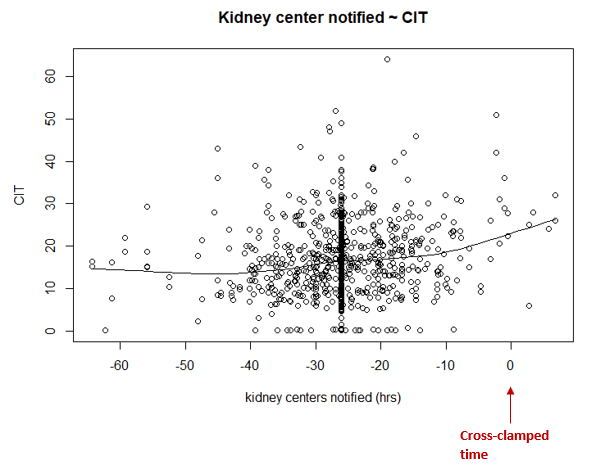Not Quite Right: The Irony of Longer Cold Times for Higher KDPI Kidneys
1Systems Science and Industrial Engineering, SUNY Binghamton, Binghamton, NY, 2LiveOnNY, New York, NY
Meeting: 2021 American Transplant Congress
Abstract number: 841
Keywords: Allocation, Kidney transplantation, Pulsatile preservation, Renal ischemia
Topic: Clinical Science » Kidney » Kidney Deceased Donor Selection
Session Information
Session Name: Kidney Deceased Donor Selection
Session Type: Poster Abstract
Session Date & Time: None. Available on demand.
Location: Virtual
*Purpose: To identify tactics for reduction of the kidney discard rate, we analyzed measurable, operational factors contributing to the key outcome of transplantation (TXP) or discard.
*Methods: A retrospective review of deceased donor kidneys recovered and allocated (1/1/17 – 12/31/18) from a single, large organ procurement organization (OPO) was undertaken using internal records and UNOS data. Factors analyzed for locally transplanted (within the OPO’s donor service area) organs included KDPI, cold ischemic time (CIT), hypothermic pulsatile perfusion pump use, and formal TXP center notification time (relative to cross-clamp).
*Results: A total of 519 donors from whom 1028 kidneys were recovered, with 18.4% DCD, a median KDPI of 70, and an overall discard rate of 17% were included. Higher KDPI was significantly associated with the likelihood of being pumped (see figure). For kidneys transplanted locally and pumped (N=772), CIT and KDPI correlated significantly; the higher the KDPI, the longer the CIT (see figure). Regression analysis of 803 locally transplanted kidneys (pumped and non pumped) with available CIT data and 4 key time points (HLA sent, crossmatch sent, kidney center notified, serologies sent) identified only the time of center notification as a significant factor (p=0.03) inversely linked to CIT.
*Conclusions: The use of hypothermic pulsatile perfusion pumping for marginal (high KDPI) kidneys was observed and is evidence-based. The observation that CIT was significantly prolonged for these marginal, pumped organs is, however, contrary to common sense or ideal practice. This important observation should be analyzed carefully to identify opportunities to improve allocation efficiency and improve the treatment of these organs. We have initially identified the relevance of early center notification as such a factor.
| KDPI Groups | N | % Pumped |
| KDPI<=20 | 115 | 47 |
20| 119 |
71 |
|
| 35<=KDPI<85 | 439 | 85 |
| KDPI>=85 | 99 | 98 |
To cite this abstract in AMA style:
Ghali H, Won D, Yoon S, Friedman A. Not Quite Right: The Irony of Longer Cold Times for Higher KDPI Kidneys [abstract]. Am J Transplant. 2021; 21 (suppl 3). https://atcmeetingabstracts.com/abstract/not-quite-right-the-irony-of-longer-cold-times-for-higher-kdpi-kidneys/. Accessed December 20, 2025.« Back to 2021 American Transplant Congress


